Transportation
Public transportation in WA
Wander around the city or across the country by Metro, Train, Tram, Bus, Trolleybus, or even Ferries. The variety of public transportation in Washington is staggering. While studying at the UW, you can explore the state's rich culture and the beauty of PNW.
In-State TransportationSeattle Department of Transportation
King Country Metro
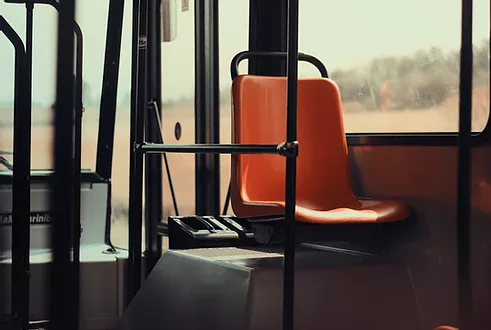
Move Around
You will find the best attractions in the Seattle
area and the best and easiest ways to get to places.
You can bike or take a scooter to and from classes, coffee places, museums, or restaurants, just like the locals do. You can also drive your car or use a car service if that’s what you prefer. Just keep in mind, bicycles are highly accessible and always have the right of way on most university inner-city streets.
Uber
Lyft
Zipcar
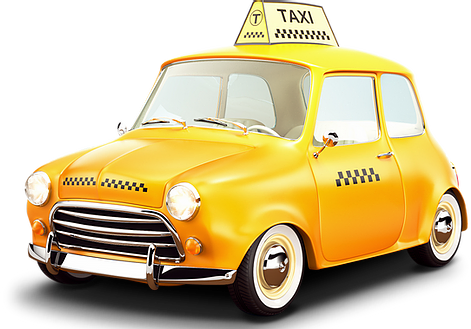
Public transportation
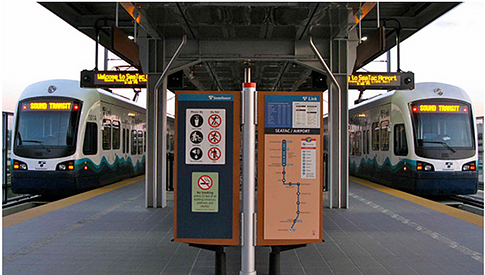
Link Light Rail
Sound Transit’s Link light rail makes trips from Angle Lake Station to the University of Washington through downtown Seattle making 14 stops along the way, including downtown Seattle and SEA Airport. Trains arrive every 6 to 15 minutes, depending on the time of day, and take about 40 minutes to travel between Seattle-Tacoma International Airport (SEA) and Westlake Station in downtown Seattle.
ScheduleMon-Sat, 5:00am–1:00am (last train from the airport departs at 12:04am) Sun, 6:00am–midnight (last train from the airport departs at 11:19pm)
Adult Fare: $2.25–$3.25 (ORCA cards); more >> soundtransit.org
King County Metro Transit
King County Metro Transit provides bus service in downtown Seattle and outlying neighborhoods in King county. Download the mobile app for on-the-go transit information, available for iPhone and Android.
ScheduleTime-tables and route maps are available at the Transit Information Center in the tunnel under Westlake Center at 4th Avenue & Pine Street, or can be found on the King County Metro Transit website.
Adult Fare: $2:75–$3.25 (ORCA cards); more >>kingcounty.gov
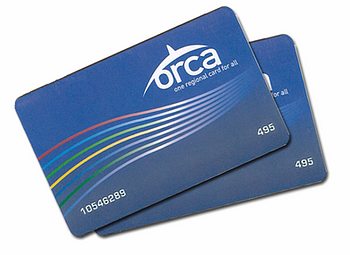
ORCA CARDS
These transit passes can be used on streetcars, light rail, buses, and more. Please note: they do not work on Washington State Ferries or the Seattle Center Monorail). ORCA cards cost $5; load an all-day regional transit pass onto an ORCA card for $8. Transit pass value covers $3.50 per ride.
orcacard.com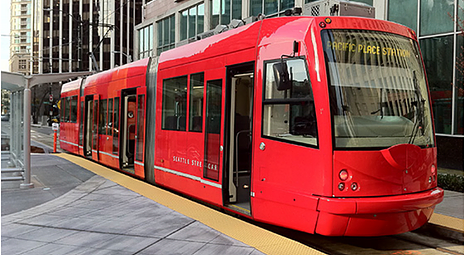
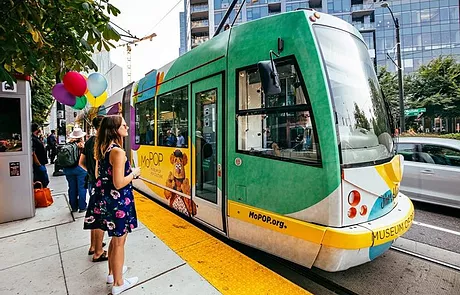
SEATTLE STREET CARS
South Lake Union:
The line connects the South Lake Union neighborhood to Seattle’s vibrant downtown core, consisting of 1.3 miles, nine stops, and full of shops and restaurants as well as Lake Union’s 12-acre waterfront park.
ScheduleMon-Thu, 6:00am–9:00pm
Fri-Sat, 6:00am–11:00pm
Sun, 10:00am–7:00pm
First Hill:
This line consists of 10 stops and stretches 2.5 miles, connecting to Link light rail at the Capitol Hill and International District stations, the Sounder Commuter Rail and Amtrak intercity rail at the King Street Station, and Metro Transit buses at several points.
ScheduleMon-Sat, 5:00am–1:00am
Sun, 10:00am–8:00pm
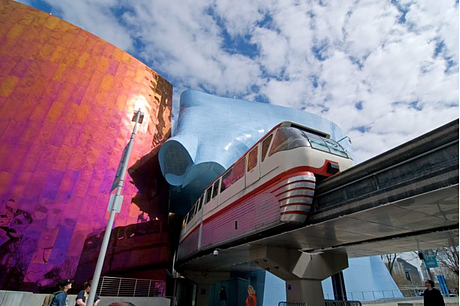
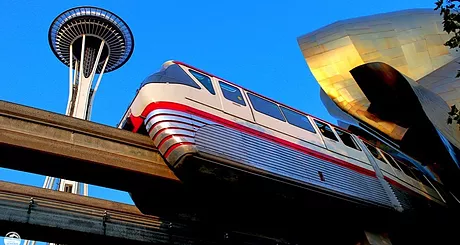
Seattle center monorail
The iconic Seattle Center Monorail travels between Westlake Center in downtown and Seattle Center at the base of Queen Anne hill. Regular operating hours are between 7:30am and 11pm, Monday-Friday, and from 8:30am to 11pm, Saturday & Sunday. Trains depart every 10 minutes and the trip takes only 2 minutes each way. One-way fare for adults is $2.50. Schedules, information and FAQs are on the Seattle Center Monorail website.
ScheduleMay-Dec
Mon-Fri, 7:30am–11pm
Sat-Sun, 8:30am– 11pm Sat–Sun
Jan-May
Mon-Thu, 7:30am–9pm
Fri, 7:30am–11pm
Sat, 8:30am– 11pm
Sun, 8:30am–9pm Sun
seattlemonorail.com
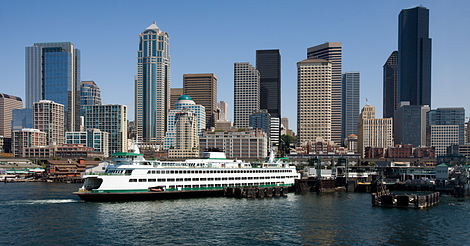
Washington state ferries
Washington State Ferries (WSF) is a government agency that operates automobile and passenger ferry service in the U.S. state of Washington as part of the Washington State Department of Transportation. It runs ten routes serving 20 terminals located around Puget Sound and in the San Juan Islands, designated as part of the state highway system.
Tickets are the fare you pay for your ride. You can buy tickets online or in person. They are valid for 90 days. Commuter or discounted passes are available on the passes page.
Your ticket does not guarantee your spot on a ferry. Ferries are loaded on a first come, first serve basis.
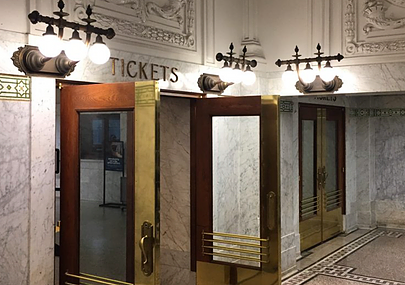
Travel by Rail
Five train routes service Seattle’s King Street Station, just south of downtown. Sound Transit’s Sounder commuter train spans Everett, north of Seattle, to Lakewood, south of Tacoma. Amtrak has three routes: Coast Starlight travels between Seattle, Portland, and Los Angeles. Amtrak Cascades travels between Vancouver, BC; Seattle; Tacoma; Portland; Salem; and Eugene. Empire Builder travels between Chicago; Minneapolis/St. Paul; Spokane; Portland; and Seattle. Rocky Mountaineer offers a high-end travel option between Seattle; Vancouver, BC; and the Canadian Rockies.
Private transportation
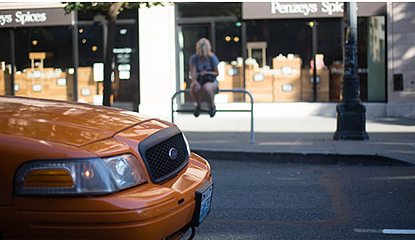
Taxis, Limos, Town Cars & Ride Sharing
At SEA Airport, taxis and ride-sharing companies are available on the third floor of the parking garage. One-way rides between the airport and downtown range from $40-$55. To arrange for a limo, town car or taxi ride in advance, use any of the travelers’ information boards in baggage claim or visit the ground transportation information booth on the third floor of the parking garage.
In downtown Seattle, Lyft , Uber, and metered taxis offer in-city transportation from local drivers. All rides can be scheduled using smartphone apps.
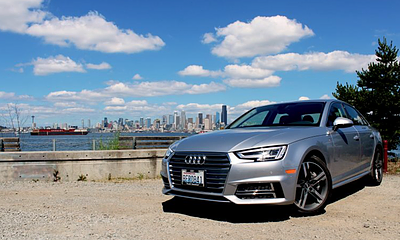
Rental Cars & Car Sharing
Rental Cars & Car Sharing All car rental companies providing service at SEA Airport are located in the off-site car-rental facility. Dedicated shuttle buses run 24/7 to pick up passengers outside baggage claim at the north and south ends of the main terminal. If you prefer to enjoy the city using public transit when first arriving, car rentals are available at multiple downtown Seattle locations.
Visitors can rent vehicles by the hour from Zipcar or by the minute GIG Car Share or Lime.
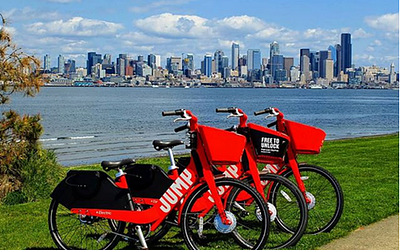
Bike Sharing
Seattle is a bike-friendly city. If you’re visiting, it’s easy to find a ride no matter where you are. Open your Uber app and select the Bike option from the top menu to quickly and easily reserve a nearby JUMP bike. All bikes are dockless and include an electric assist that provides a boost up to 15mph. JUMP bikes are free to unlock and charge $0.15 per minute.
Another app-based, bike-share service is Lime, offering both e-assist and pedal bike options throughout Seattle. Simply download the app and scan the QR code to unlock a bike for only $1, plus varying rates per minute.
University of Washington
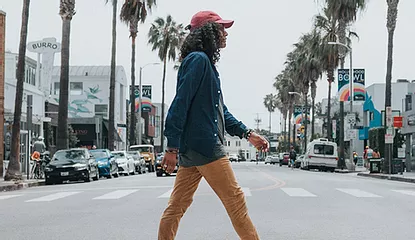
WALKING
With the university's network of pathways, amazing views and historic landmarks, walking is by far the most popular way to get around. It’s also a great (and green) way to commute, with 28% of people walking to the UW each day.
Find a good look at the walking map for the university!
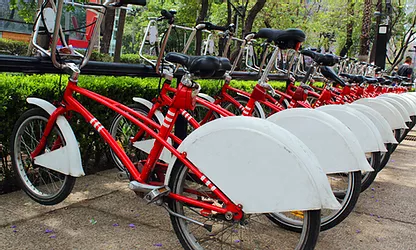
BIKING
Biking is another way to get around campus. It’s super convenient to ride a bike and park it outside your lecture halls. You do require proper gear like a helmet. You should also be aware about the biking rules in Seattle and to particularly drive in the bike lane.
You need to be super cautious about the biking rules as it is very much within the law to get a ticket if you are found not obeying the traffic rules.
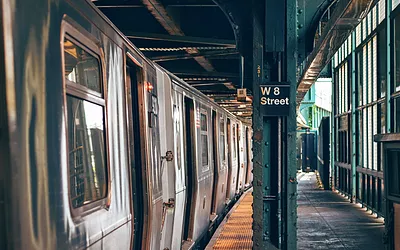
TRANSIT
Get a U-PASS. Otherwise, you are allowed to pay cash upfront or use the Transit Go app on your smartphone to access the busses, link rails, and more. It’s easy to get to the University of Washington by bus or train.
More than 60 bus routes serve the University District, including many that drive onto the campus itself.
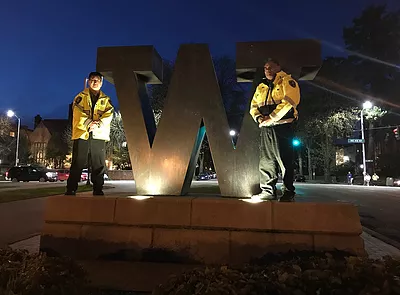
NIGHT COMMUTE
Husky Night Walk - Husky NightWalk is safe and easy to use. Uniformed security guards operate 6:30 pm to 2 a.m. daily EXCEPT University Holidays, providing a walking escort to community members within the campus locations and the residential area north of 45th St., and to the UW Tower location. Guards can also assist you to your designated halls with a proper identification card. They can even help you with lock outs.
Husky Commute - NightRide provides a fare-free, safe and easy way for Husky Card holders to get home at night. NightRide shuttles pick up passengers at eight convenient campus locations and drop off passengers anywhere within one of two zones after the campus location stops.